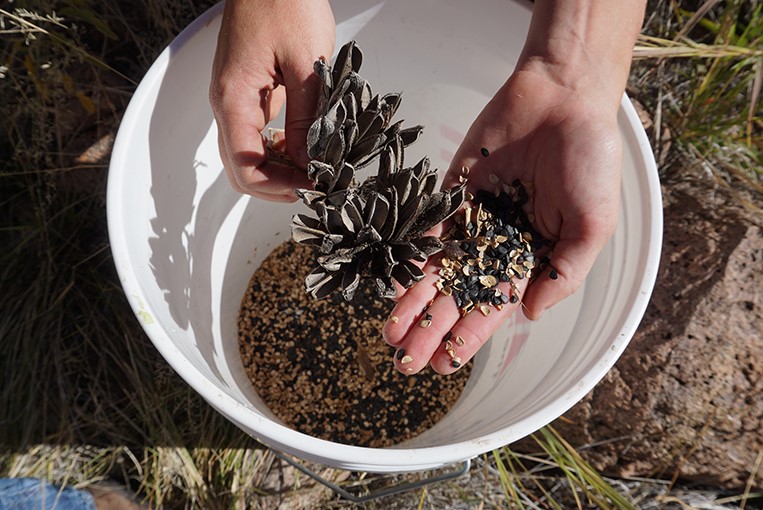Protecting the Nectar Corridor

The endangered Mexican long-nosed bat (Leptonycteris nivalis) hovered beside the 20-foot-tall stalk of an agave and probed the deep flowers with its long snout. Lapping at the nectar, flakes of pollen blanketed its muzzle, ready to drop into the next flower.
Agaves are considered chiropterophilic, or “bat-loving,” plants, and BCI is working with a number of partners to restore agaves and help nectar bats in the U.S. and Mexico. So far, the team, which includes Borderlands Restoration Network, Colectivo Sonora Silvestre, and Especies, Sociedad y Hábitat A.C. (ESHAC), has planted over 9,500 agaves, begun restoration work on over 200 hectares, signed eight conservation agreements, and taught environmental awareness workshops to hundreds of school children and community members. This work is crucial because bats and agaves depend on one another.
“Many species in this botanical group have evolved, developing a series of adaptations so that bats become their main pollinators. In this way, agaves offer food and, in return, bats contribute to the pollination of these plants,” says Dr. José Juan Flores-Maldonado, executive director of the Mexican nonprofit ESHAC.
Bats carry pollen long distances and can cross-pollinate distant groups of agaves. This helps the genetic diversity of agaves, increasing their resilience to disease, and mitigating the detrimental impact of climate change, which is threatening to shrink their range by 70–95%.